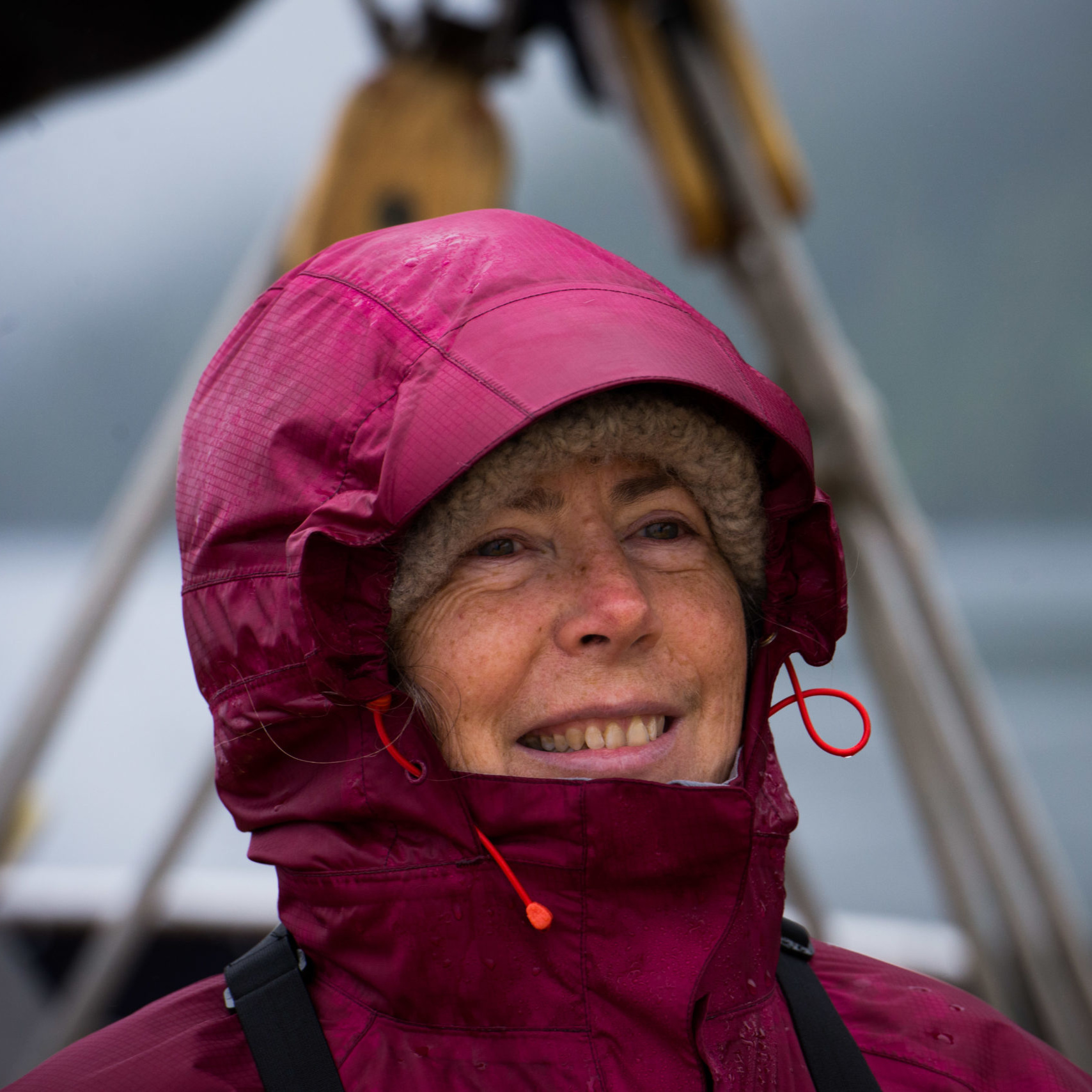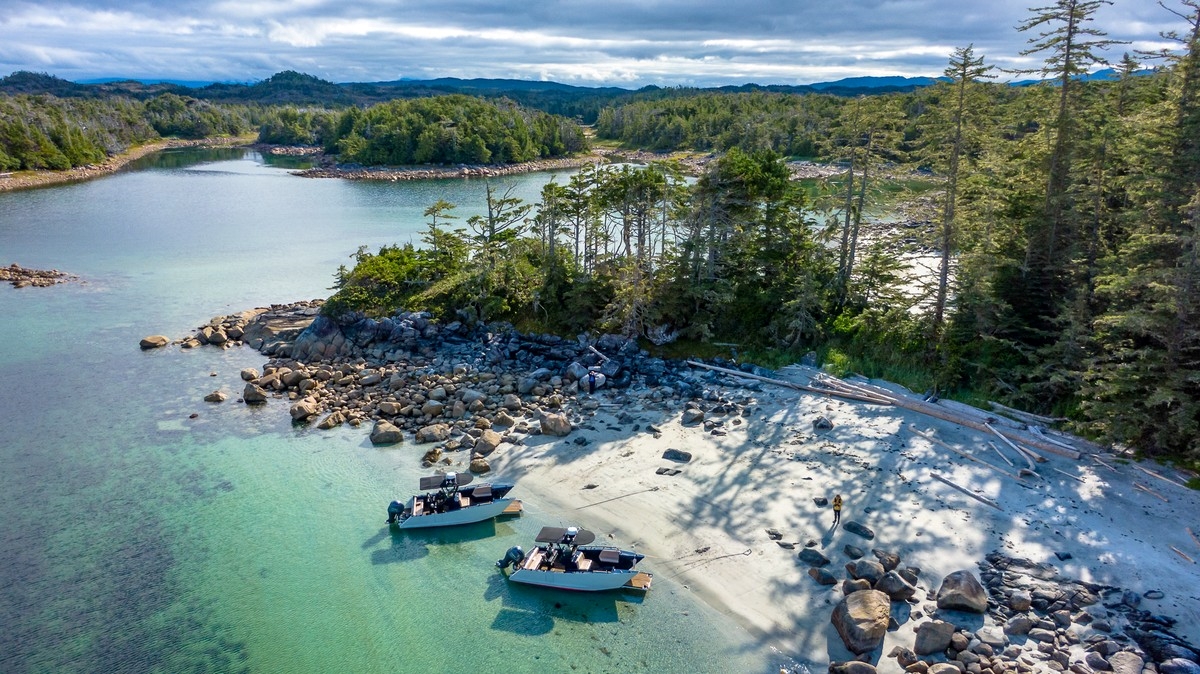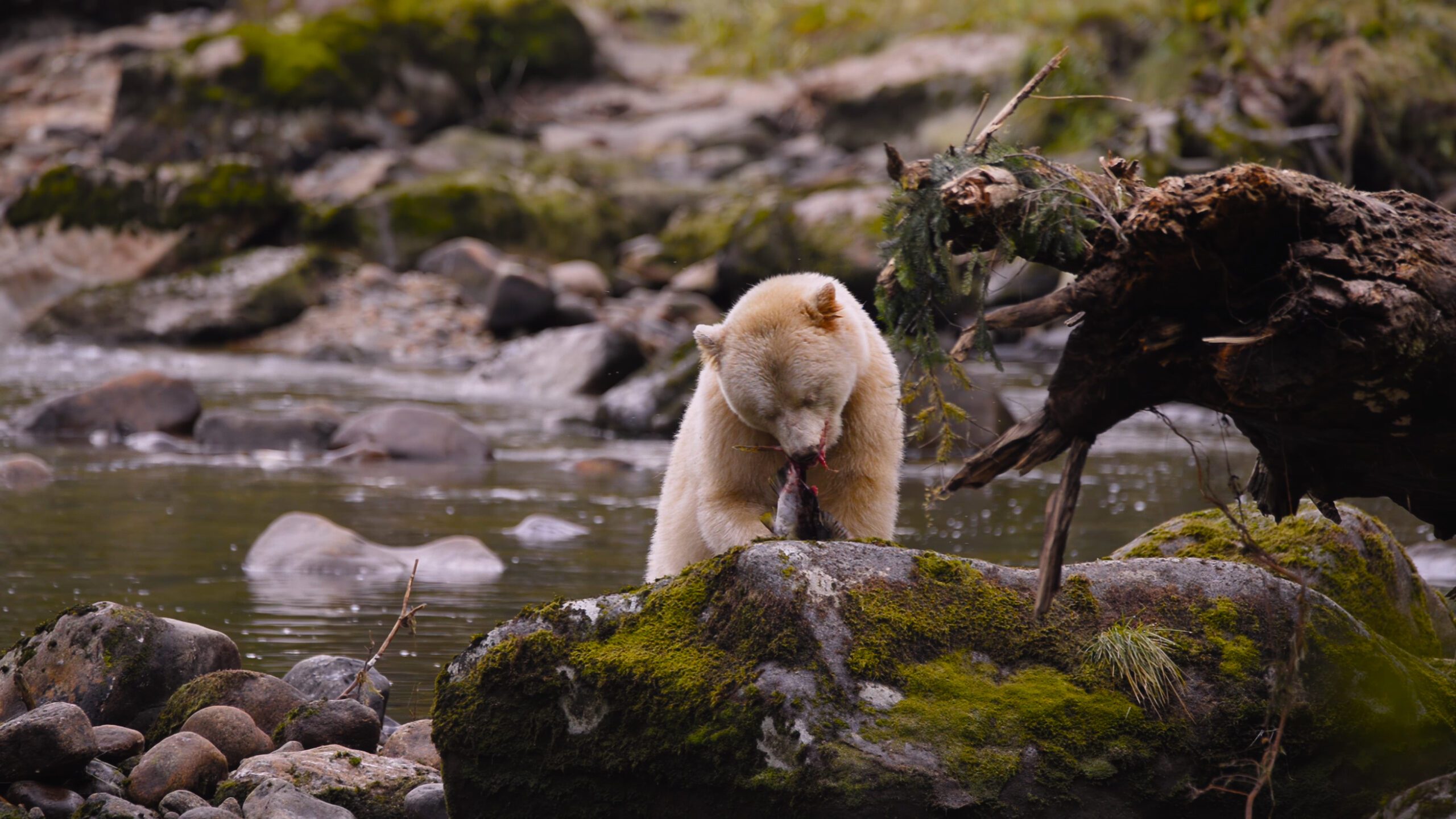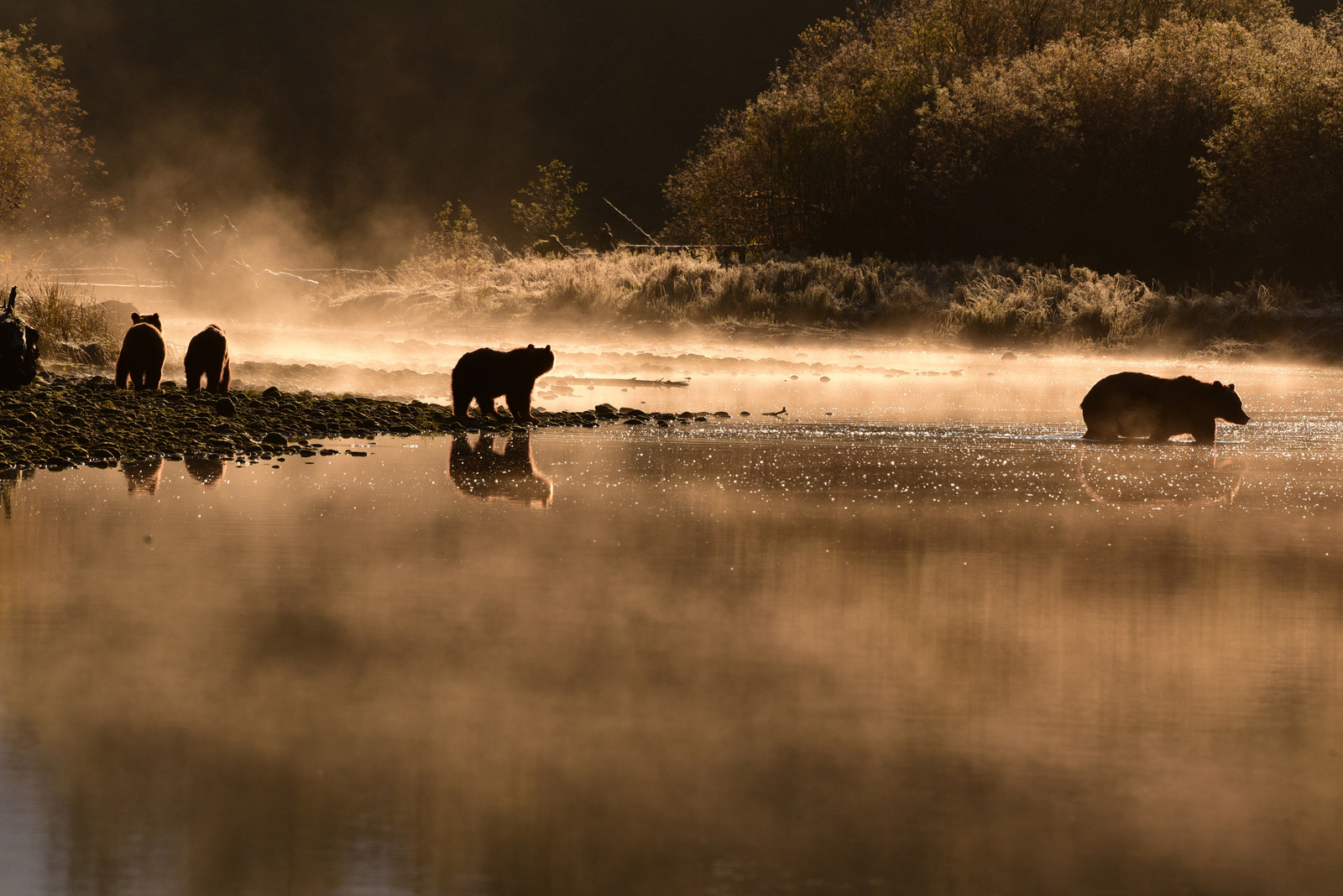Written by Sherry Kirkvold, naturalist
I have always said that I have to be in Great Bear Rainforest in the fall. There is nowhere on Earth I would rather be at that time of year. But last year was different. COVID was still poorly understood, and circling the globe. The local First Nations closed their territories to outsiders in a bid to keep themselves safe. Now a year later, I am looking forward to returning. For me, fall in the Great Bear is among the ultimate experiences in nature. I have worked as a naturalist there since 1995. I never worry about what we might see, as I have complete faith that it will be spectacular and amazing.
Once salmon start returning to their natal streams, a whole explosion of other wildlife follows suit. Bears (including the rare white-coated spirit bear) and wolves come to feed on salmon. Huge masses of gulls clean up the dead carcasses or feast on the roe. Dippers wade the stream bottoms fishing out salmon eggs. Eagles gather in huge numbers, and on it goes.
And while all of this is happening on land, the waters of the Great Bear Sea are just as lively. Humpback whale populations continue to grow, and this is one of the areas where group bubble-net feeding occurs. Sometimes a single whale will blow a net, sometimes two or three whales will work together, and in some cases the mouths of a dozen or so whales will explode from the surface all at once as they cooperate in feeding together.
Along with the increase in humpback whales, we are also seeing more fin whales using the area. This very fast whale is second only to the blue whale in size. Dall’s porpoises, harbour porpoises, elephant seals, harbour seals, minke whales, killer whales, Steller’s sea lions, and Pacific White-sided Dolphins add to the marine mammals in the area.
Local indigenous groups in the area developed a rich culture in large measure due to the richness of the land and sea. In spite of much of this area being a vast wilderness, evidence of cultural uses can be seen throughout.
All of this is possible to see on any fall trip in the Great Bear Rainforest, but I particularly like to do the very last trip of the season in October. I often refer to it as the grand finale. So many times it just seems that the whole area is teeming with action. We have had time to find out which areas various species are using, and everything is taking advantage of the abundant food before they migrate, hibernate, or just settle in to the slower pace that comes with winter. It really is all about food. Eat now while the eating is good. You might think the same while you are aboard!
A small bonus late in the season is that fall colours add to the beauty of the scenery. I am so happy to be going back to the Great Bear Rainforest this fall!
It’s not too late to join a fall journey through one of Earth’s greatest wild places. This yearly spectacle is not one to be missed, and this year is especially poignant as the fifth anniversary of the Great Bear Rainforest Agreement, which helped secure the region’s future as a destination for discerning nature travellers, protecting millions of hectares of rainforest, and uncountable numbers of bears, wolves and whales in the process. Click here to check availability across our weeklong wildlife safaris.
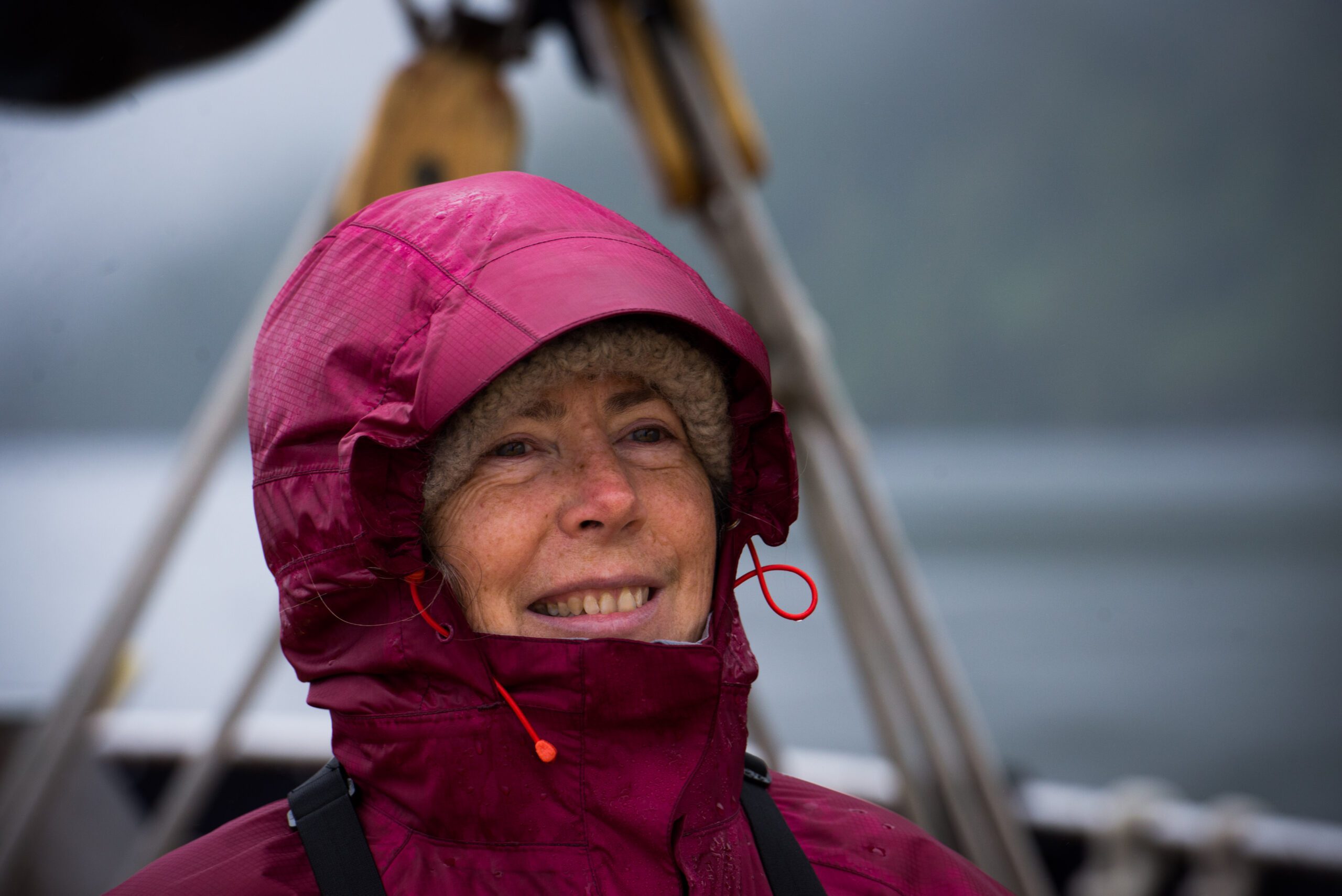
Sherry Kirkvold photographed in the Great Bear Rainforest by Tavish Campbell
